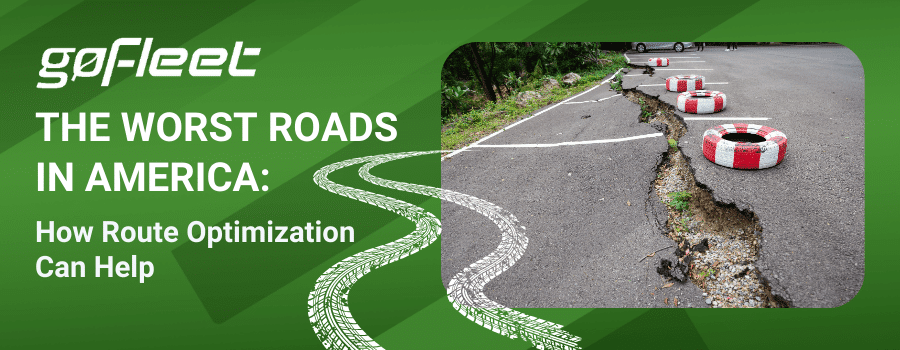In today’s fast-paced world, where mobility is paramount and vehicles are an integral part of our daily lives, ensuring the security of these assets has become more crucial than ever before. With the rise in vehicle thefts and the ever-present risk of unauthorized access, it is imperative for individuals and businesses alike to adopt robust security measures. Fortunately, advancements in technology have brought forth a powerful tool that can significantly enhance vehicle security: GPS tracking solutions.
The value of vehicles extends far beyond their monetary worth. They provide us with freedom, convenience, and access to various aspects of our personal and professional lives. However, the increased reliance on vehicles has also attracted the attention of criminals seeking to exploit their vulnerabilities. Vehicle thefts, break-ins, and unauthorized use have become prevalent issues that affect individuals, families, and businesses, leading to financial losses, emotional distress, and disruptions in daily routines. Thus, safeguarding our vehicles from such risks has become an essential priority.
In the quest for robust vehicle security, GPS tracking solutions have emerged as a game-changer. Utilizing the Global Positioning System (GPS) technology, these innovative solutions provide real-time monitoring and tracking capabilities, enabling vehicle owners and fleet managers to maintain constant vigilance over their assets. By equipping vehicles with GPS tracking devices, users gain access to a plethora of security features, such as live location tracking, geofencing, tamper alerts, and remote immobilization.
The integration of GPS tracking solutions empowers vehicle owners to proactively respond to security threats, whether it’s a stolen vehicle or unauthorized access. Real-time location tracking allows for swift recovery efforts, as law enforcement agencies can precisely pinpoint the vehicle’s whereabouts. Moreover, the ability to set up geofences, virtual boundaries within which the vehicle is expected to remain, ensures that any deviation from predefined routes or locations triggers instant alerts. These alerts enable immediate action, preventing potential thefts or unauthorized use.
Additionally, GPS tracking solutions offer features like tamper alerts, which notify users in case of any attempted manipulation or unauthorized removal of the device, acting as a deterrent for thieves. The capability to remotely immobilize a vehicle, disabling its engine and preventing further movement, provides an effective measure to thwart thefts or protect the vehicle until law enforcement arrives.
By harnessing the power of GPS tracking solutions, vehicle owners can not only protect their assets but also gain peace of mind. Whether it’s ensuring the safety of a personal vehicle, managing a fleet of commercial vehicles, or providing security for high-value assets, the implementation of GPS tracking solutions offers a comprehensive and proactive approach to vehicle security.
In this blog series, we will delve deeper into the various aspects of GPS tracking solutions, exploring their features, benefits, and practical applications. From understanding the technology behind these solutions to exploring best practices for implementation, we aim to equip readers with the knowledge required to enhance vehicle security effectively.
So, join us on this journey as we navigate through the realm of GPS tracking solutions and unlock the potential to fortify vehicle security like never before.
Understanding GPS Tracking Solutions
At the heart of GPS tracking solutions lies the Global Positioning System (GPS), a satellite-based navigation system that enables precise positioning and tracking of objects on Earth. GPS works by utilizing a network of orbiting satellites that transmit signals to GPS receivers on the ground. These receivers calculate their distance from multiple satellites by measuring the time it takes for the signals to reach them. By triangulating these distances, the GPS receiver can determine its precise location on the Earth’s surface.
A GPS tracking system consists of two main components: the GPS device installed in the vehicle and the accompanying software used to monitor and manage the tracked data.
GPS Device:
- The GPS device, typically a compact and discreet unit, is installed in the vehicle, either covertly or overtly, depending on the intended purpose. It communicates with the orbiting satellites to receive signals and calculate the vehicle’s precise location. The device also incorporates additional features such as internal storage, antennas for signal reception, and communication capabilities for transmitting data to the software platform.
Software:
- The software component of a GPS tracking system plays a vital role in capturing, processing, and presenting the data received from the GPS device. It offers a user-friendly interface through which vehicle owners and fleet managers can access real-time information about their assets. The software platform provides various functionalities, such as live tracking, historical data analysis, geofencing setup, and alerts configuration. Additionally, it may include features like reporting tools, maintenance scheduling, and integration with other business systems for comprehensive fleet management.
GPS tracking solutions offer a range of features and capabilities specifically designed to enhance vehicle security. Here are some key aspects:
Real-time Location Tracking:
GPS tracking solutions provide accurate and real-time location information, allowing users to monitor their vehicles’ whereabouts at any given time. This feature is invaluable for theft recovery efforts, as it enables law enforcement agencies to swiftly track and retrieve stolen vehicles.
Geofencing:
Geofencing is a powerful feature that allows users to define virtual boundaries or geographically restricted areas for their vehicles. Whenever a vehicle enters or exits these predefined zones, the GPS tracking system triggers immediate notifications. Geofencing helps detect unauthorized use, unexpected detours, or vehicle entry into restricted areas, providing proactive security measures.
Tamper Alerts:
GPS tracking devices are equipped with sensors that detect any tampering attempts or unauthorized removal. If someone tries to manipulate or disable the device, an alert is sent to the user, ensuring prompt action can be taken to protect the vehicle.
Remote Immobilization:
In critical situations, where immediate action is necessary to prevent theft or unauthorized use, GPS tracking solutions offer remote immobilization capabilities. Authorized users can remotely disable the vehicle’s engine, rendering it inoperable and preventing further movement until the situation is resolved.
Historical Data Analysis:
By capturing and storing historical data, GPS tracking solutions enable users to review past vehicle routes, stops, and speeds. This information can be invaluable in reconstructing events, identifying patterns, and investigating incidents related to vehicle security.
GPS tracking solutions provide a comprehensive approach to vehicle security, offering real-time monitoring, proactive measures, and data-driven insights.
In the next section, we will delve deeper into the specific benefits of GPS tracking solutions, showcasing how they can revolutionize vehicle security and provide peace of mind to vehicle owners and fleet managers alike.
Benefits of GPS Tracking Solutions for Vehicle Security
A. Real-time location tracking:
One of the significant benefits of GPS tracking solutions for vehicle security is the ability to monitor and track vehicles in real-time. By equipping vehicles with GPS devices, owners and fleet managers gain immediate access to precise location information. This feature allows for constant surveillance of vehicles, ensuring that their whereabouts are known at all times.
Real-time location tracking is particularly valuable in situations where immediate action is required, such as thefts or unauthorized use. Law enforcement agencies can swiftly locate stolen vehicles, increasing the chances of successful recovery.
B. Anti-theft capabilities:
GPS tracking solutions act as a powerful deterrent against theft and aid in vehicle recovery. The presence of visible GPS devices on vehicles serves as a warning to potential thieves, deterring them from targeting the vehicle in the first place. Moreover, in the unfortunate event of theft, GPS tracking systems provide crucial assistance in locating and recovering the stolen vehicle.
By continuously transmitting location data, these solutions enable law enforcement agencies to track the stolen vehicle’s movements and take appropriate action to retrieve it promptly.
C. Geofencing and alerts:
Geofencing is a highly beneficial feature offered by GPS tracking solutions. It allows users to create virtual boundaries or designated areas on a map. Whenever a vehicle equipped with a GPS device enters or exits these predefined zones, the system triggers alerts.
Geofencing provides an added layer of security by notifying users of any unauthorized movement or deviation from established routes. This feature is particularly useful for monitoring vehicle usage, detecting potential thefts, and ensuring compliance with designated areas.
D. Remote immobilization:
GPS tracking systems offer the remarkable capability of remotely immobilizing a stolen vehicle. In the event of theft, authorized users can initiate a remote immobilization command, disabling the vehicle’s engine and preventing further movement.
This feature not only aids in preventing the thieves from getting away with the vehicle but also enhances safety by minimizing the risk of high-speed pursuits. Remote immobilization serves as a powerful tool for recovering stolen vehicles while mitigating potential damages or dangers associated with theft situations.
E. Emergency response:
GPS tracking solutions play a crucial role in emergency situations, facilitating swift response and assistance. These systems can be integrated with advanced sensors and algorithms to detect accidents or unusual vehicle behaviors, such as sudden deceleration or impact.
When such events occur, the GPS tracking system automatically triggers alerts, notifying the appropriate parties or emergency services. This functionality enables rapid response times and timely assistance to injured parties, potentially saving lives and minimizing damages.
GPS tracking solutions empower vehicle owners and fleet managers with a range of benefits that enhance vehicle security. From real-time location tracking to anti-theft capabilities, geofencing, remote immobilization, and aiding emergency response, these solutions offer a comprehensive approach to safeguarding vehicles and mitigating risks.
Considerations for Choosing GPS Tracking Solutions
When choosing a GPS tracking solution for vehicle security, several key factors should be considered to ensure the system meets your specific needs. Here are some crucial considerations:
- Reliability: Look for a GPS tracking solution that offers a reliable and stable performance. The system should provide consistent tracking data and maintain a strong connection with the GPS satellites, even in challenging environments or adverse weather conditions.
- Accuracy: The accuracy of location data is paramount for effective vehicle security. Ensure that the GPS tracking solution provides precise and real-time location information. Look for systems that offer high-resolution mapping and minimal location errors.
- Ease of Use: The usability of the GPS tracking solution is essential for seamless integration into your vehicle security operations. Opt for a system that has an intuitive interface, making it easy to access and interpret the tracking data. The software should offer user-friendly features, clear visualizations, and customizable settings.
- Integration Capabilities: Consider the integration capabilities of the GPS tracking solution. Look for systems that can seamlessly integrate with other relevant software or platforms you may already be using, such as fleet management systems or security systems. This integration ensures a holistic approach to vehicle security and enhances overall operational efficiency.
To optimize vehicle security, it is important to choose a GPS tracking system that offers specific features and functionalities tailored to your requirements. Here are some essential features to look for:
- Real-time Tracking: Ensure the GPS tracking system provides real-time location updates, allowing you to monitor your vehicles instantly. Real-time tracking enables swift response in case of theft or unauthorized use.
- Geofencing and Alerts: Look for a system that supports geofencing capabilities, allowing you to create virtual boundaries and receive immediate alerts when a vehicle enters or exits designated areas. This feature helps detect unauthorized movements and deviations from predetermined routes.
- Tamper Alerts: Choose a GPS tracking solution that offers tamper alerts. These alerts notify you if someone tries to tamper with or remove the GPS tracking device, providing an additional layer of security.
- Remote Immobilization: Consider a system that includes remote immobilization functionality. This feature allows authorized users to remotely disable a stolen vehicle, preventing further movement until recovery efforts are initiated.
- Reporting and Analytics: Look for a GPS tracking solution that offers comprehensive reporting and analytics capabilities. The ability to generate detailed reports on vehicle activities, such as routes, speeds, and stops, can aid in identifying patterns, optimizing operations, and enhancing security protocols.
- Mobile Access: Ensure the GPS tracking system provides mobile access through a dedicated mobile app or responsive web interface. This allows you to monitor and manage your vehicles’ security on the go, providing flexibility and convenience.
By carefully considering these factors and functionalities, you can select a GPS tracking solution that aligns with your vehicle security goals and enhances your overall security strategy.
Best Practices for Implementing GPS Tracking Solutions
Implementing GPS tracking solutions for vehicle security requires careful planning and execution. Here are some practical tips and recommendations to ensure a successful implementation:
- Define Objectives: Clearly outline your objectives and goals for implementing GPS tracking solutions. Identify the specific security challenges you aim to address and the desired outcomes you want to achieve. This will help guide your implementation strategy and ensure that the system aligns with your needs.
- Assess Vehicle Needs: Conduct a thorough assessment of your vehicles’ requirements and determine which vehicles will benefit most from GPS tracking. Consider factors such as the type of vehicles, their usage patterns, and their susceptibility to security risks. This assessment will help prioritize the deployment of GPS tracking devices and tailor the system to suit your fleet’s unique characteristics.
- Choose Reliable Hardware: Select GPS tracking devices from reputable manufacturers that offer reliable hardware. Ensure that the devices are durable, weather-resistant, and capable of providing accurate and consistent tracking data. Consider factors such as battery life, installation ease, and compatibility with your vehicle fleet.
- Plan Device Placement: Strategically plan the placement of GPS tracking devices in your vehicles. Consider factors such as accessibility, discreetness, and protection from tampering. Covert placement may be preferred for security reasons, while overt placement can act as a deterrent to potential thieves.
- Train Employees: Provide comprehensive training to your employees on how to use the GPS tracking system effectively. Ensure that they understand the purpose of the system, how to interpret tracking data, and how to respond to security alerts. Training should also cover best practices for maintaining the system’s integrity and addressing any privacy concerns.
Gaining employee buy-in and ensuring a smooth adoption of GPS tracking technology is essential for successful implementation. Here are some strategies to encourage employee acceptance and facilitate training:
- Communicate the Benefits: Clearly communicate the benefits of GPS tracking solutions to your employees. Emphasize how the technology enhances their safety, protects company assets, and contributes to overall operational efficiency. Highlight the potential positive impact on their work routines and the organization as a whole.
- Address Privacy Concerns: Be transparent about the data collected through GPS tracking and address any privacy concerns that employees may have. Clearly explain the purpose of the system and how the collected data will be used solely for security and operational purposes. Reassure employees that their privacy rights will be respected and that the system will be implemented in compliance with relevant regulations.
- Involve Employees in the Process: Involve employees in the decision-making process and seek their input on the implementation of GPS tracking solutions. Solicit their feedback, address their questions and concerns, and take their suggestions into account. By involving them from the start, you can foster a sense of ownership and collaboration.
- Provide Training and Support: Offer comprehensive training sessions to employees on how to use the GPS tracking system effectively. Conduct hands-on workshops, provide user manuals, and offer ongoing support to address any questions or challenges they may encounter. Encourage open communication channels where employees can seek guidance and share feedback.
- Emphasize Accountability and Fairness: Clearly communicate the purpose of GPS tracking as a tool for enhancing security and promoting accountability. Emphasize that the system is not intended for micromanagement or surveillance but rather for ensuring the safety of employees and protecting company assets. Promote a culture of fairness and trust, highlighting that GPS tracking is implemented for the benefit of all stakeholders.
By implementing these best practices and strategies, you can ensure a smooth adoption of GPS tracking solutions, gain employee buy-in, and maximize the effectiveness of the system in enhancing vehicle security.
Future Trends and Innovations in GPS Tracking Solutions for Vehicle Security
As technology continues to evolve, GPS tracking solutions for vehicle security are poised for significant advancements. Here are some emerging trends and technologies that are shaping the future of GPS tracking:
- Advanced Sensors and IoT Integration: Integration with Internet of Things (IoT) devices and advanced sensors offers exciting possibilities for vehicle security. By combining GPS tracking with sensor data, such as vehicle diagnostics, fuel levels, or driver behavior, a more comprehensive security ecosystem can be created. Real-time insights from these sensors enable proactive maintenance, early detection of potential security risks, and improved operational efficiency.
- Cloud-Based Solutions: Cloud-based GPS tracking solutions provide enhanced scalability, flexibility, and accessibility. By leveraging the power of the cloud, vehicle owners and fleet managers can easily access tracking data, reports, and analytics from any device with an internet connection. Cloud-based solutions also offer seamless updates, robust data storage, and the potential for real-time collaboration among stakeholders.
- Integration with Advanced Driver Assistance Systems (ADAS): Integration between GPS tracking systems and ADAS technologies can significantly enhance vehicle security. ADAS features such as collision detection, lane departure warnings, and automatic emergency braking can work in tandem with GPS tracking to provide a comprehensive safety net. The integration allows for real-time alerts, immediate response, and improved incident management.
Artificial Intelligence (AI), machine learning, and predictive analytics are transforming the capabilities of GPS tracking systems for vehicle security. Here are some notable advancements in these areas:
- Predictive Maintenance: By analyzing data collected from GPS tracking systems and other sources, AI and machine learning algorithms can predict potential vehicle maintenance issues before they occur. This predictive maintenance approach allows for proactive maintenance scheduling, reducing the risk of vehicle breakdowns and optimizing the overall health and longevity of the fleet.
- Anomaly Detection: AI and machine learning algorithms can analyze vast amounts of GPS tracking data to identify anomalies or patterns indicative of security breaches or abnormal vehicle behavior. By establishing baselines and continuously monitoring vehicle activities, these systems can automatically detect suspicious activities, such as unauthorized vehicle access or deviation from normal routes.
- Intelligent Route Optimization: AI-powered GPS tracking solutions can optimize vehicle routes based on various factors, including traffic conditions, road closures, and historical data. By utilizing machine learning algorithms, these systems can continuously learn and adapt to changing conditions, providing more efficient and secure routes for vehicles. Intelligent route optimization not only saves time and fuel but also reduces the exposure to potential security risks.
- Behavior Monitoring and Risk Scoring: AI algorithms can analyze driver behavior data captured by GPS tracking systems to assess risk levels. By considering factors such as harsh acceleration, abrupt braking, or speeding, the system can assign risk scores to individual drivers. This information helps identify high-risk behaviors, implement targeted training programs, and enhance overall driver safety and security.
These advancements in AI, machine learning, and predictive analytics are revolutionizing GPS tracking solutions for vehicle security. By harnessing the power of these technologies, businesses and individuals can proactively protect their assets, optimize operations, and create safer roadways.
Conclusion
In this blog series, we explored the significant role of GPS tracking solutions in enhancing vehicle security. We began by highlighting the importance of vehicle security in today’s world and introduced GPS tracking solutions as a powerful tool for safeguarding our valuable assets.
We discussed the basic working principle of GPS technology and the components of a GPS tracking system. Additionally, we delved into the features and capabilities of GPS tracking solutions related to vehicle security, such as real-time location tracking, anti-theft capabilities, geofencing and alerts, remote immobilization, and emergency response.
We then moved on to discuss the considerations for choosing a GPS tracking solution, emphasizing factors like reliability, accuracy, ease of use, and integration capabilities. Furthermore, we provided insights into best practices for implementing GPS tracking solutions effectively, including defining objectives, assessing vehicle needs, choosing reliable hardware, and providing comprehensive employee training.
Vehicle security is of paramount importance in today’s world, where thefts and unauthorized access pose significant risks. GPS tracking solutions offer a comprehensive approach to enhance vehicle security. With real-time location tracking, anti-theft capabilities, geofencing, remote immobilization, and emergency response functionalities, these solutions empower vehicle owners and fleet managers with the tools to protect their assets effectively.
By adopting GPS tracking solutions, individuals and businesses can proactively monitor and track their vehicles, prevent thefts, detect unauthorized movements, and respond swiftly to emergencies. The integration of emerging technologies like AI, machine learning, and predictive analytics further enhances the capabilities of GPS tracking systems, enabling predictive maintenance, anomaly detection, intelligent route optimization, and behavior monitoring.
At GoFleet, we encourage readers to explore and adopt GPS tracking solutions to enhance the security of their vehicles. Whether you are a personal vehicle owner looking to protect your valuable asset or a fleet manager seeking efficient security measures, GPS tracking solutions provide the necessary features and functionalities to address your specific needs. By leveraging the power of these solutions, you can gain peace of mind, mitigate risks, and optimize the overall security of your vehicles.
Take the next step in fortifying your vehicle security by researching reputable GPS tracking solution providers, evaluating their offerings, and selecting a system that aligns with your requirements. Embrace the future of vehicle security by harnessing the potential of GPS tracking solutions and staying ahead of potential threats.
Remember, the safety and security of your vehicles are within your control. Invest in GPS tracking solutions today to protect your assets tomorrow.
Ready to reduce costs and minimize downtime through effective equipment maintenance? Discover the power of GPS tracking solutions for optimizing maintenance processes. Take advantage of preventive and predictive maintenance, remote diagnostics, and streamlined inventory management. Don’t let equipment breakdowns drain your resources.
Invest in a reliable GPS tracking system today and start reaping the benefits of reduced costs and increased operational efficiency. Take control of your equipment maintenance and elevate your business to new heights. Get started now and unlock the potential of GPS tracking for equipment maintenance. Contact us today!







